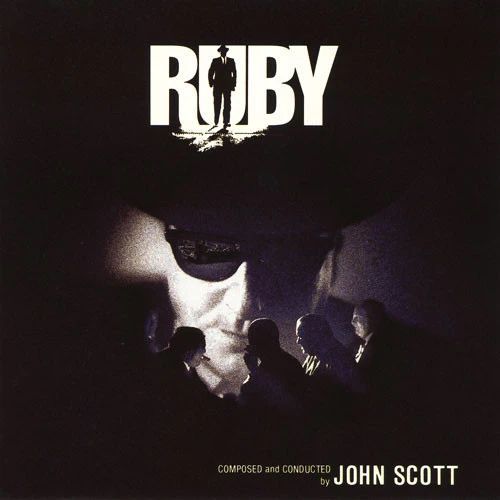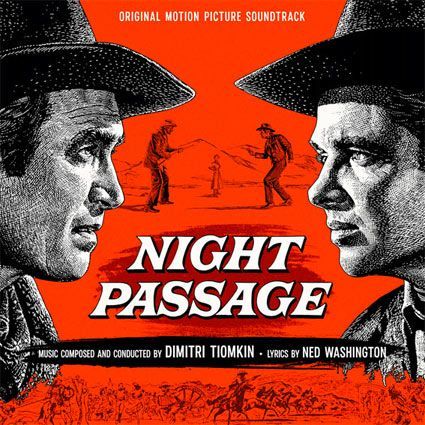Ruby

Label: Intrada
Catalogue No: MAF 7026D
Release Date: 1992
Total Duration: 47:19
UPN: 720258702623
On the heels of Oliver Stone’s JFK comes this intriguing account, seen through the eyes of Jack Ruby, whose complete involvement in the assassination has never been clearly understood but who seemed to play a major part in it. John Scott’s score is a brilliant one, contrasting small jazz ensemble with a lovely symphonic melody which captures a contradictory innocence that belies the message of the film.
“Main Title” opens with mysterious, dark and brooding piano tinkering over low string chords, moving in and out of the ambience and later on embellished by brass and an eerie high-string wailing. It’s a striking musical depiction of corruption and conspiratorial evil. From this introduction emerges the Main Theme, first heard from solo trumpet – a solitary and stark jazz arrangement – and then in a full symphonic arrangement. The melody is grandly symphonic, almost majestic, and its sense of joy and innocence seems almost out of place in such a dark-hued film; it becomes a counterpoint to the introductory mysterious theme and the jazz renditions, which support the darker, conspiratorial tonality of the film. As it’s developed, the main theme will often be overwhelmed by these motifs and other rhythmic figures, as if Scott is showing us the innocence of Jack Ruby as it is tantalized. tempted and finally overwhelmed by the thrust of irreversible circumstances into which he has allowed himself to become immersed.
“Ruby Meets Candy” features a likeable rhythmic motif for pounding drums beneath saxophone, the musical color is intriguing and effective; the motif is later is given more melodic depth through woodwinds. “Telephone Trixie” is a catchy jazz melody, nicely arranged and played. “The Hanging” features a jazzy version of the Main Theme amidst dark suspense tonalities, while “Cuba” makes use of a brief bossa-nova-like variant on the Main Theme in the midst of the mystery theme. A new, 7-note rhythmic figure is introduced in “Never Go Back” and reprised in “Later Hank” which seems to further illustrate the idea of circumstances out of control – Scott’s use of rhythm in this score provides an effective, subliminal sense of despair even in the midst of his prettier melodies – seeing the story from hindsight, as we do, we understand how events will be played out and how irrevocable is the fate of many of the characters. Scott’s music supports this idea very well.
The score’s mix of small jazz ensemble with large symphony orchestra is also effective and allows Scott to comment on the interior motivations of the characters (mystery/jazz themes) as well as support the bigger picture (Main Theme). “Pre-Assassination” comprises a furtive suspense motif culminating with a harsh stroke of brass and cymbal which seems to finalize the events that are about to transpire as if a book were closed in heaven and the outcome of those events were already written. “Ruby Kills Oswald” continues to support this idea of irreversible “fate” with a claustrophobic miasma of thick orchestration. The Main Theme emerges briefly in its midst but is quickly overcome by the power of the rhythm… and only sounds again at the cue’s end, and there for solo trumpet over strings, sounding much like an epitaph.
With its mixture of jazz and symphonic orchestral colorations, and its brilliant contrast of melody with rhythm, innocence with evil, control with irrevocable destiny, Scott’s music for RUBY is one of the year’s best scores and has been superbly preserved on this digital recording from Intrada.



